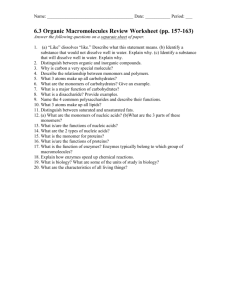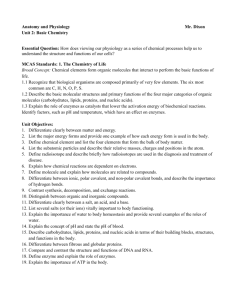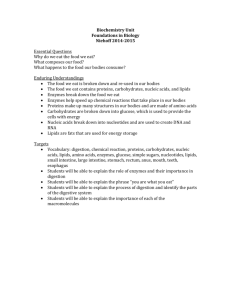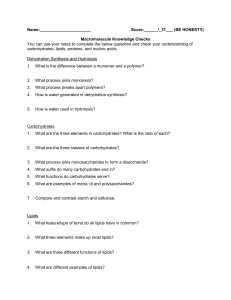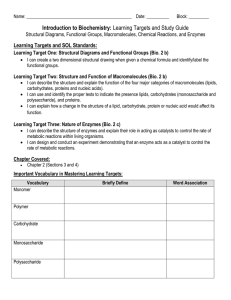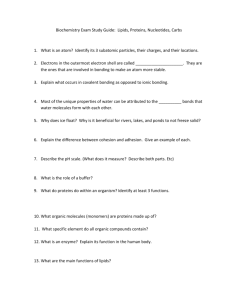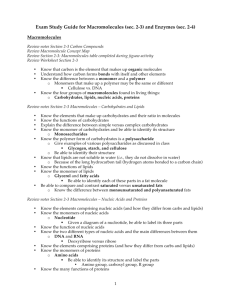Biology Unit 1: Standards, Objectives, and Tasks
advertisement
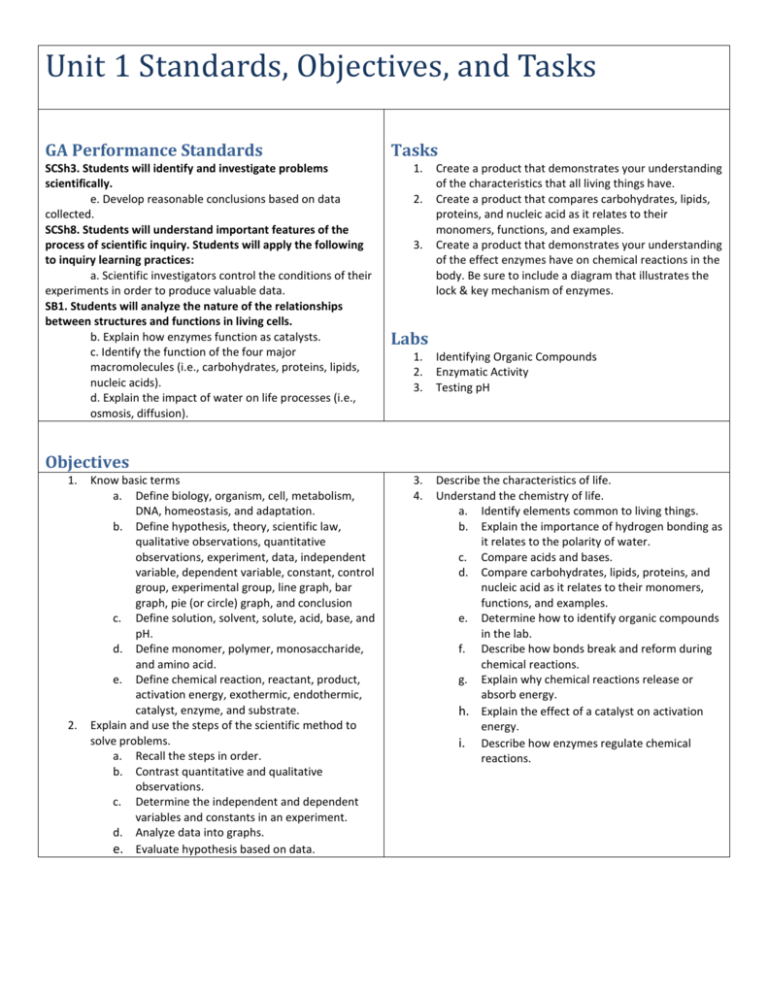
Unit 1 Standards, Objectives, and Tasks GA Performance Standards SCSh3. Students will identify and investigate problems scientifically. e. Develop reasonable conclusions based on data collected. SCSh8. Students will understand important features of the process of scientific inquiry. Students will apply the following to inquiry learning practices: a. Scientific investigators control the conditions of their experiments in order to produce valuable data. SB1. Students will analyze the nature of the relationships between structures and functions in living cells. b. Explain how enzymes function as catalysts. c. Identify the function of the four major macromolecules (i.e., carbohydrates, proteins, lipids, nucleic acids). d. Explain the impact of water on life processes (i.e., osmosis, diffusion). Tasks 1. 2. 3. Create a product that demonstrates your understanding of the characteristics that all living things have. Create a product that compares carbohydrates, lipids, proteins, and nucleic acid as it relates to their monomers, functions, and examples. Create a product that demonstrates your understanding of the effect enzymes have on chemical reactions in the body. Be sure to include a diagram that illustrates the lock & key mechanism of enzymes. Labs 1. 2. 3. Identifying Organic Compounds Enzymatic Activity Testing pH 3. 4. Describe the characteristics of life. Understand the chemistry of life. a. Identify elements common to living things. b. Explain the importance of hydrogen bonding as it relates to the polarity of water. c. Compare acids and bases. d. Compare carbohydrates, lipids, proteins, and nucleic acid as it relates to their monomers, functions, and examples. e. Determine how to identify organic compounds in the lab. f. Describe how bonds break and reform during chemical reactions. g. Explain why chemical reactions release or absorb energy. h. Explain the effect of a catalyst on activation energy. i. Describe how enzymes regulate chemical reactions. Objectives 1. 2. Know basic terms a. Define biology, organism, cell, metabolism, DNA, homeostasis, and adaptation. b. Define hypothesis, theory, scientific law, qualitative observations, quantitative observations, experiment, data, independent variable, dependent variable, constant, control group, experimental group, line graph, bar graph, pie (or circle) graph, and conclusion c. Define solution, solvent, solute, acid, base, and pH. d. Define monomer, polymer, monosaccharide, and amino acid. e. Define chemical reaction, reactant, product, activation energy, exothermic, endothermic, catalyst, enzyme, and substrate. Explain and use the steps of the scientific method to solve problems. a. Recall the steps in order. b. Contrast quantitative and qualitative observations. c. Determine the independent and dependent variables and constants in an experiment. d. Analyze data into graphs. e. Evaluate hypothesis based on data.
